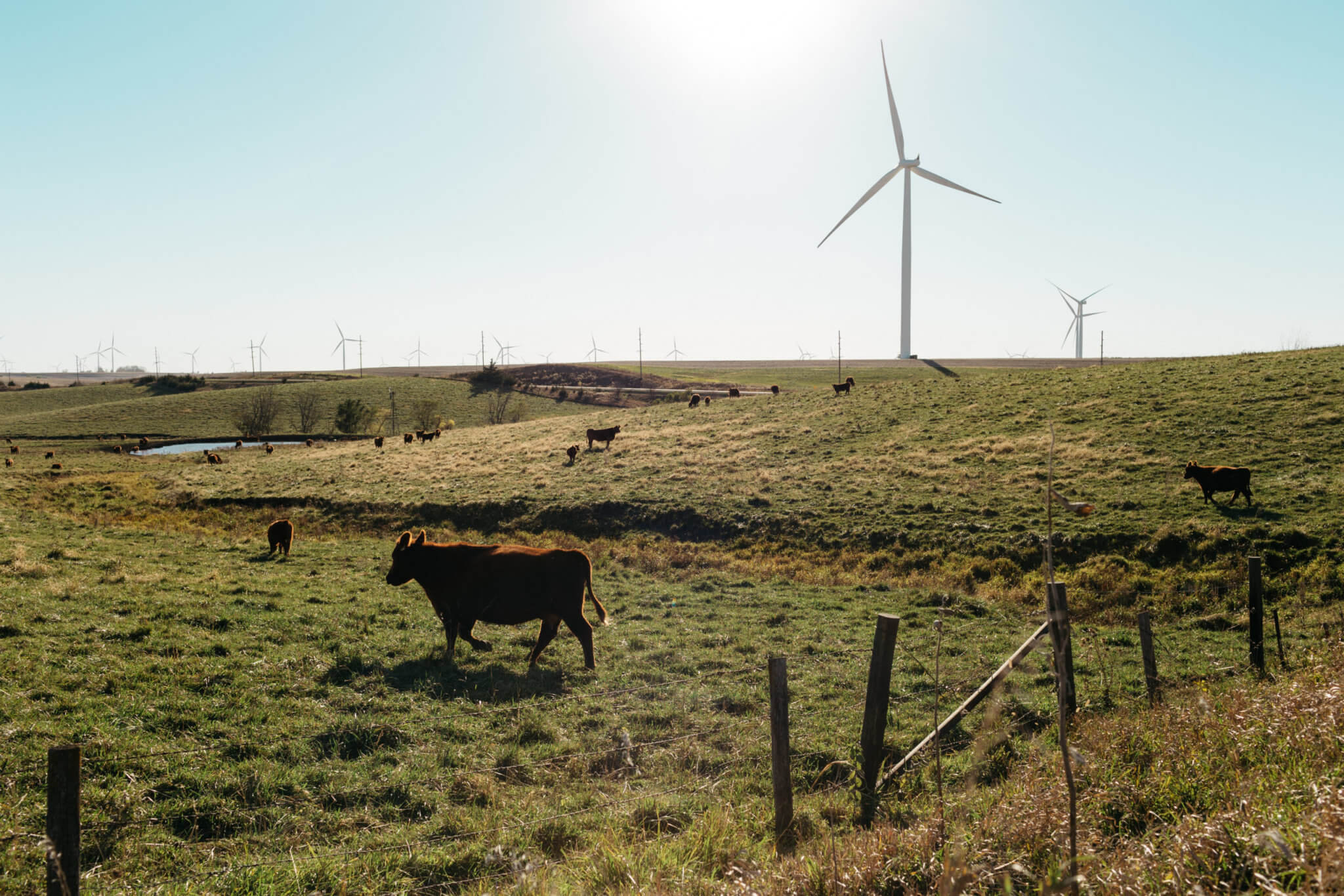Wind energy expansion and birds of prey: A Conservation partnership
As a carbon-free energy source, wind power is a leading climate change solution. And that’s important to countless species threatened by a warming planet. For example, the National Audubon Society finds two-thirds of North American birds are at risk of extinction due to climate change. Wind also helps cut smog-creating air pollution from sulfur dioxides and nitrogen oxide.
American wind power is proud to be a low-impact source of large-scale electricity generation. To provide low-cost and low-impact electricity, the industry has supported extensive research to understand wind and wildlife interactions. Initiatives like the Wind and Wildlife Research Fund, adherence to the Wind Energy Guidelines and extensive post-construction monitoring help us understand, avoid and mitigate wildlife impacts.
All of that research and the commitment to generating low-impact electricity allows the U.S. wind power to further improve its good stewardship.
Technological solutions: Minimizing risk during operation
There are many variables and constraints for siting wind energy projects, and at least some species of conservation concern are present across all parts of the U.S. As wind energy expands, we need to continue improving to ensure impacts remain low. The Wind and Wildlife Research Fund and other research initiatives allow the industry to do just that. New and innovative strategies, including advanced technologies, offer solutions to minimize impacts of operating wind facilities.
Addressing wind-wildlife challenges through innovation
For those species that do have elevated risks or are protected by law, targeted technologies are reducing impacts while maximizing clean energy generation. Blanket curtailment (curtailment that occurs indiscriminately below a set cut-in wind speed) can be effective at reducing wildlife impacts for some species. However, it often results in unnecessary electricity production losses and thus less carbon-free electricity. Smart technologies that zero in on key species through machine learning offer a win-win solution for wind power production and conservation.
Some species of raptors (birds of prey) are the focus for conservation efforts in the U.S., such as bald and golden eagles, which are protected by federal law and are an important cultural symbol. Several technologies are specifically designed to minimize risk for raptors at operating wind facilities. One example is IdentiFlight, a technology designed to reduce risk for eagles. Some models suggest that more than 99 percent of eagles in the vicinity of wind farms give turbines a wide berth. For the few eagles that fly closer to the turbines, this camera-based, machine-learning technology is designed to detect and track them and send a signal to temporarily pause turbine rotor blades in the eagle’s path. IdentiFlight is now on the market and can be installed as a built-in or after-market modification to a wind farm.
DTBird is another technology that is designed to automatically detect certain types of birds and reduce collision risk by deterring them using sounds and/or by pausing the turbine rotor blades.
Besides third-party-developed options, some turbine manufacturers offer built-in wildlife detection. These and many other technologies targeting birds and bats are under development or are already being used to help to make wind energy safer for wildlife. No other energy source goes to such lengths to be good stewards.
More data, improved outcomes: Building a better algorithm
Many curtailment systems today operate at the facility level. However, with sufficient computing power, could wind farms of the future use smart technologies that make curtailment decisions based on specific risk factors rather deploying blanket application? If possible, this approach which would greatly reduce the amount of electricity lost to curtailment. Achieving this outcome depends on cooperative research and data sharing to build strong models that will support the creation of robust algorithms.
The Wind Wildlife Research Fund, managed by the American Wind Wildlife Institute (AWWI), is a unique industry-led initiative that pools resources to advance critical research on wind-wildlife interactions and solutions like machine learning technologies.
This year, 33 wind companies invested in the Fund to support seven research projects, including one focused on developing a curtailment regime protocol capable of being tailored to individual wind facilities that use the IdentiFlight system. The project is evaluating data collected by the IdentiFlight system at Duke Energy’s Top of the World wind farm in Wyoming to model eagle behavior in the vicinity of wind turbines. The objective is to improve the curtailment algorithms that can apply to impact minimization technologies, so the wind industry can continue protecting eagles while also reducing turbine shutdowns.
AWWI 10th Anniversary Documentary from American Wind Wildlife Institute on Vimeo.
By expanding the body of scientific knowledge and statistically valid data, this and other Fund research projects are helping to decrease risk and increase the certainty associated with wind energy projects. That makes wind farms safer for wildlife while reducing the cost of wind energy. In late 2019 and early 2020, the Fund will begin publishing results from 2019 research projects and will announce projects selected for funding in 2020.
To learn more about the Wind Wildlife Research Fund, contact AWWI Executive Director Abby Arnold at aarnold@awwi.org.





